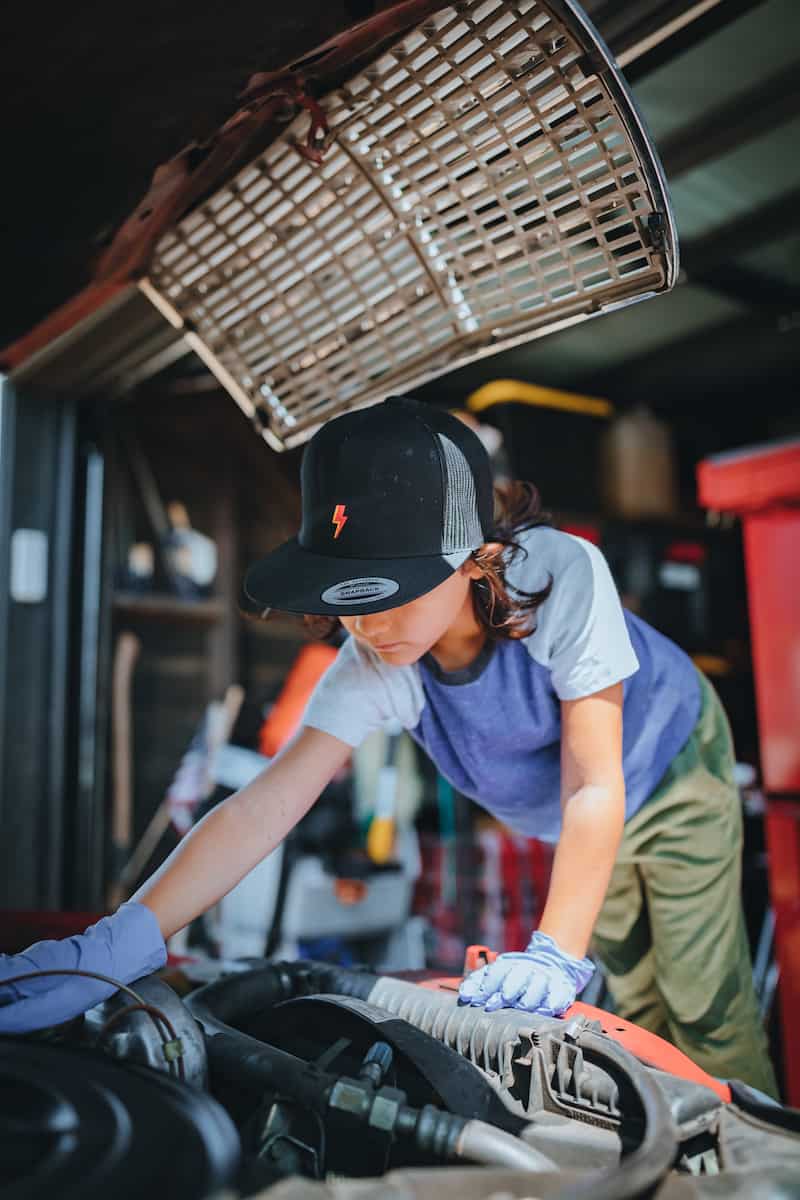
The best way to save time and money while teaching your children to be more self-sufficient is by introducing them to the basics of car maintenance. Neither you nor your child need to be gear heads, all it takes is the right attitude and the willingness to get your hands a bit dirty.
Our daily drivers include a 1983 Mercedes-Benz 300D and a newly purchased 1999 Toyota Land Cruiser. Both of these vehicles are known for legendary reliability, but that doesn’t mean you can neglect them or wait for something to go wrong.

Preventative maintenance is the key, and our boys have helped us with oil changes and tire maintenance as soon as they could hold a wrench.
Both of our vehicles sit on Michelin tires, so it was only natural to ask them for their car care tips. We modified these tips so they can apply to mechanics of all ages.

Start With The Basics
No matter how versed you are in car repair, the first thing you’ll want to do is show your kids the basic inner-workings of the vehicle. Point out the key parts underneath the hood, from the spark plugs to the engine and battery. If possible, do this on multiple vehicles, as the equipment won’t always be in the same place.
Once you’ve looked under the hood of a few vehicles, ask your son or daughter to identify some common parts. They’ll enjoy correctly naming the parts and their functions

Simple Maintenance
The next step in getting your children interested in car care is having them help you complete simple maintenance tasks. In fact, if you have a teenager who will be driving soon, you can even make it a requirement that they learn how to service some aspects of the car before they take their road test.
Start them off real easy by having them show you how to refill your car’s windshield wiper fluid. If they have any questions, have them reference your car’s owner’s manual.

Hands-On Maintenance
Once they’ve mastered that simple task, it’s time to move on to bigger maintenance tasks that will be very helpful down the road. There are three specific tasks that every car owner should know:
Check Tire Air Pressure
A trusted air tire pressure gauge will do the trick here when checking inflation; note: you’ll want to test on “cold” tires, or tires that haven’t been driven on for at least 3 hours. 30-35 PSI is the ideal range.
Properly inflated tires offer better gas mileage and a more comfortable ride.

Check Tire Tread
All you’ll need for this one is a spare penny to conduct the penny test to check your tire’s tread depth to ensure quality tread depth. We’re looking at anywhere above 3/32 inch as good to drive on.
Check for screws or nails in the tire and take note of cracks or damage to the tire.

Replace Windshield Wipers
Wiper blades last an average of 6 months. They will often tell you when they need replacing as they will tear off or start squeaking. Check them regularly before it rains.

Change Air filter
You need a new air filter your car every 12 months or 12,000 miles, whichever comes first. Pop the hood, look for the rectangular black box with metal clips, open the casing, and replace filters with the new one.
Remove any debris such as leaves that might be stuck inside the air filter housing to ensure they stay out of your engine.

Battery Maintenance
Car batteries should continually be kept clean and free of dirt and corrosion at all times; while under the hood, be sure your battery’s free of any debris/material. If you notice any corrosion or loose cables, replace or repair immediately.
Car maintenance is a great lesson in being self-sufficient. By teaching them how to change their own flat tires or check the battery connections, they will less likely be stranded waiting for AAA, and more empowered to take on tougher challenges.
Photos: Steve Makowski



